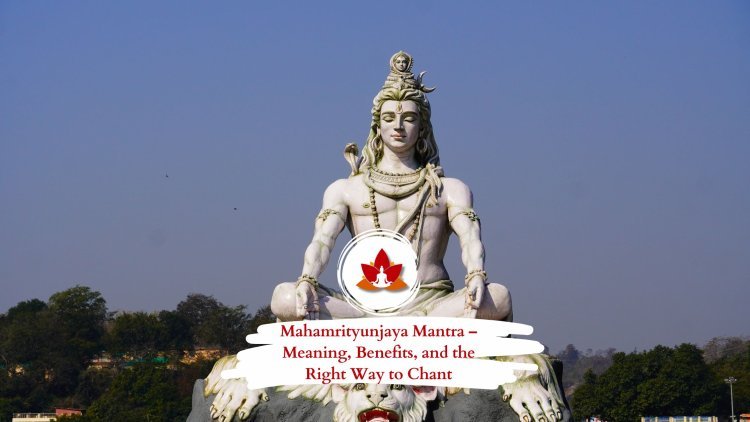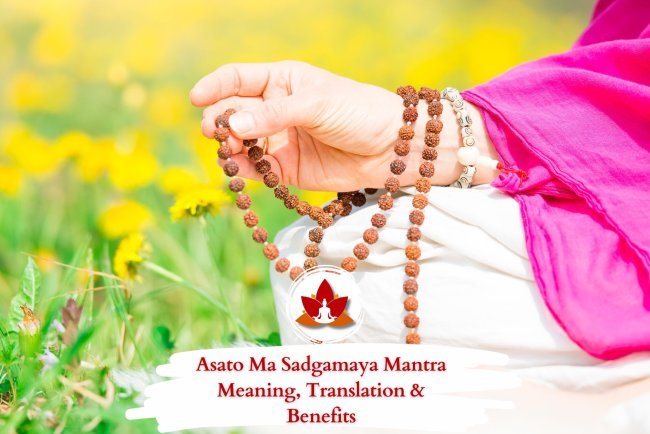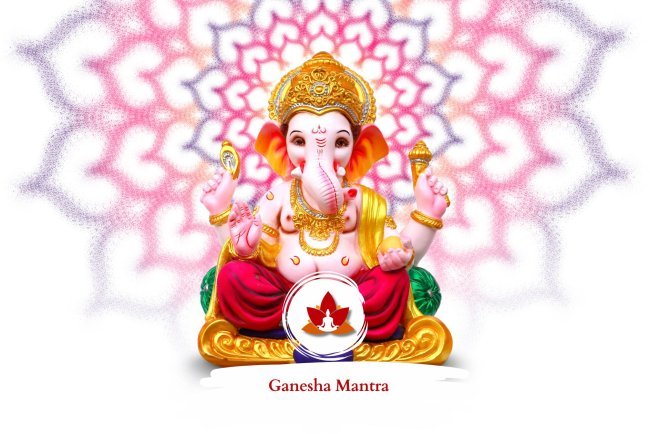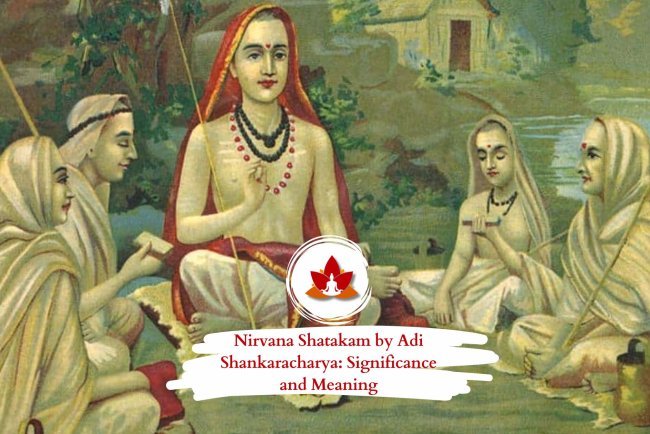Mahamrityunjaya Mantra – Meaning, Benefits, and the Right Way to Chant

The Mahamrityunjaya Mantra, also known as the Rudra Mantra or Tryambakam Mantra, is one of the most powerful and sacred Vedic chants dedicated to Lord Shiva. It is a divine invocation for healing, protection, and liberation—a prayer that transcends fear, suffering, and even death itself.
The term Mahamrityunjaya translates to “the great victory over death,” symbolizing triumph over the limitations of the physical world and awakening to one’s eternal nature.
Originating from the Rig Veda (7.59.12), this mantra is considered as potent and revered as the Gayatri Mantra. Regular chanting is believed to bring longevity, vitality, inner strength, and spiritual wisdom. Often referred to as the Mantra of Immortality, it guides the seeker beyond worldly attachments toward ultimate liberation—moksha, the state of complete freedom.
Translation of the Mahamrityunjaya Mantra
-
Devanagari Script:
ॐ त्र्यम्बकं यजामहे सुगन्धिं पुष्टिवर्धनम् ।
उर्वारुकमिव बन्धनान्मृत्योर्मुक्षीय माऽमृतात् ॥ -
Transliteration:
Om Tryambakam Yajamahe Sugandhim Pushtivardhanam
Urvarukamiva Bandhanan Mrityor Mukshiya Maamritat -
Translation:
“We worship the three-eyed Lord Shiva, who spreads fragrance and nourishes all beings. May He liberate us from the bondage of worldly attachments and death, and lead us toward the nectar of immortality.”
Line-by-Line Meaning
-
Om – The primordial sound representing the Supreme Consciousness, the vibration from which all creation emerges.
-
Tryambakam – The three-eyed Lord Shiva, symbolizing awareness of the past, present, and future, as well as the power of perception beyond illusion.
-
Yajamahe – We worship, honor, and meditate upon with deep devotion.
-
Sugandhim – The divine fragrance that pervades everything, symbolizing purity, grace, and the all-encompassing presence of the Divine.
-
Pushtivardhanam – The one who nourishes, strengthens, and sustains all beings—bestowing vitality, health, and spiritual growth.
-
Urvarukamiva – Like a ripe cucumber that effortlessly detaches from its stem, symbolizing liberation from the cycle of birth and death.
-
Bandhanat – From all bondage, limitations, and attachments that confine the soul.
-
Mrityor Mukshiya – Free us from death, fear, and ignorance—granting liberation from the mortal plane.
-
Ma Amritat – May we not be separated from immortality; bless us with eternal life, wisdom, and oneness with the Divine.
Spiritual and Philosophical Implications
The Mahamrityunjaya Mantra carries profound spiritual and philosophical wisdom, illuminating the eternal truth that while the body is mortal, the soul is immortal. It reminds the seeker that death is not an end but a transition—a passage from one state of existence to another.
By recognizing the deathless nature of the soul, one overcomes the fear of mortality and moves toward inner peace and eternal life. The mantra does not seek to prolong physical existence but to transcend the cycle of birth and death, guiding the practitioner toward spiritual awakening.
Lord Shiva, revered as the divine healer, is invoked through this sacred chant as a source of healing energy, strength, and protection from suffering and adversity. His presence symbolizes transformation, renewal, and the dissolution of ignorance.
The reference to the cucumber releasing itself from the vine signifies the natural and effortless liberation of the soul from the body—free from attachment or struggle. Similarly, the vibration of this mantra helps dissolve worldly bondages, bringing serenity, balance, and spiritual freedom.
Ultimately, the Mahamrityunjaya Mantra leads the devotee toward moksha—the ultimate liberation, where the soul merges with the infinite consciousness of the Divine.
Benefits of Reciting the Mahamrityunjaya Mantra
The Mahamrityunjaya Mantra is more than just a chant—it is a powerful vibration that heals, protects, and uplifts the soul. Regular recitation of this sacred mantra brings harmony to the mind, body, and spirit.
-
Protection from Negative Energies
This mantra acts as a spiritual shield, safeguarding the practitioner from negative influences, harmful vibrations, and misfortune. It creates a protective aura that nurtures strength and stability. -
Freedom from the Fear of Death
By connecting with the eternal aspect of the Self, chanting this mantra dissolves fear and anxiety about mortality. It instills courage, faith, and inner resilience in the face of life’s challenges. -
Attainment of a Peaceful Transition
The mantra is often chanted for those who are ill or nearing the end of life. It invokes Lord Shiva’s blessings for a peaceful and conscious departure, helping the soul transcend without suffering or fear. -
Spiritual Growth and Higher Awareness
Each repetition elevates consciousness, deepens meditation, and expands spiritual understanding. It helps one connect with the divine essence within, paving the way toward self-realization. -
Calming and Healing Effect
The rhythmic vibrations of the mantra soothe the nervous system, reduce stress, and promote mental clarity. Its sound frequency restores inner harmony and emotional balance. -
Emotional Well-being
Regular chanting cultivates inner peace and emotional stability. It helps release fear, anger, and sorrow—bringing the practitioner into a state of acceptance, compassion, and joy.
Scientific Perspective
Modern science increasingly recognizes the healing power of sound and vibration, offering insights into why ancient mantras like the Mahamrityunjaya Mantra have such profound effects on the body and mind.
The resonant frequencies embedded in the word “Tryambakam” are believed to stimulate subtle vibrations within the body, restoring balance and harmony among the seven chakras. This aligns with the principles of vibrational healing, which emphasize the body’s ability to self-regulate through sound frequencies.
Regular chanting of the mantra cultivates mindfulness and concentration, naturally reducing stress hormones like cortisol and slowing down the heart rate. This creates a state of deep relaxation and inner coherence between the mind and body.
Scientific studies and anecdotal evidence suggest that mantra chanting can enhance immune function, improve emotional stability, and activate the brain’s frontal cortex—the region associated with focus, memory, and higher awareness.
In essence, the Mahamrityunjaya Mantra acts as both a spiritual and physiological tool, bridging the gap between ancient wisdom and modern science to promote overall well-being and inner peace.
How and When to Recite the Mahamrityunjaya Mantra
Chanting the Mahamrityunjaya Mantra deepens one’s spiritual practice, enhancing meditation and strengthening the connection with the Divine. It is not just a sacred ritual but also a daily source of peace, healing, and protection.
Ideal Time:
The most auspicious time to chant this mantra is during the Brahma Muhurta (4:00–6:00 a.m.), when the mind is calm and the atmosphere is pure. However, it can also be recited during meditation or whenever one seeks serenity and strength.
How to Chant:
-
Sit in a comfortable meditative posture with your spine straight and shoulders relaxed.
-
Keep your breath steady and natural.
-
Using a Rudraksha mala, chant the mantra at least 108 times (one full round) or in multiples of eight.
-
Focus on the intention to heal, protect, and liberate the body, mind, and soul.
-
Allow the sound vibration to flow through your being, resonating in every cell.
Creating the Atmosphere:
Light a lamp or incense stick to purify the space and create a sacred ambience. You may also keep a picture or Shiva lingam nearby to help center your focus.
When to Chant:
This mantra can be recited at any time—
-
During healing rituals or moments of physical or emotional distress.
-
While traveling, for safety and divine protection.
-
In times of crisis or uncertainty, to restore calm and courage.
-
Silently, during stressful situations, to bring peace and clarity.
-
By the bedside of the ill, where its soothing vibrations offer reassurance and comfort.
Whether recited aloud or within the heart, the Mahamrityunjaya Mantra carries an immense power to heal, protect, and awaken the divine consciousness within.
Myths and Misconceptions
Over time, several myths and misunderstandings have surrounded the Mahamrityunjaya Mantra. In truth, this sacred chant is a universal prayer of healing and liberation—open to all, regardless of background or belief.
-
“It is only for the sick.”
While the mantra is indeed known for its healing powers, its purpose extends far beyond physical well-being. It is also a spiritual practice that promotes inner transformation, strength, and enlightenment. -
“Only priests or certain castes can chant it.”
This is a misconception. The Mahamrityunjaya Mantra is for everyone—men, women, children, and people of all cultures and orientations. What matters most is faith, sincerity, and purity of intention, not one’s social identity. -
“It is a magical spell for immortality.”
The mantra is not a charm or spell that prevents death. Instead, it teaches the seeker to transcend the fear of death by realizing the immortality of the soul and its oneness with the Divine. -
“Mispronunciation invites danger.”
While correct pronunciation enhances the mantra’s vibration, it does not bring harm if chanted with a devoted and sincere heart. The Divine responds to the intention behind the chant, not the perfection of the sound.
Ultimately, the power of the Mahamrityunjaya Mantra lies not in ritual precision or exclusivity, but in devotion, awareness, and the heartfelt desire for healing and liberation.
Conclusion
The Mahamrityunjaya Mantra is not merely a prayer or a remedy—it is a sacred invocation for peace, healing, and liberation. It stands as a timeless offering to Lord Shiva, reminding the seeker of the eternal nature of the soul and its divine connection with the infinite.
Through the repetition of “Om Tryambakam Yajamahe Sugandhim Pushtivardhanam, Urvarukamiva Bandhanan Mrityor Mukshiya Maamritat,” one invites strength, vitality, and fearlessness into life. Each chant becomes a step toward inner freedom—preparing the soul for its infinite journey beyond this earthly existence.
In its essence, the Mahamrityunjaya Mantra is a song of surrender and awakening—a reminder that true immortality lies not in escaping death, but in realizing the deathless light within.
FAQs
Q1. Can anyone recite the Mahamrityunjaya Mantra?
Yes, absolutely. Anyone with a sincere heart and pure intention can chant this mantra—regardless of age, background, or faith. The only requirement is devotion and mindfulness.
Q2. How many times should it be repeated each day?
Traditionally, the mantra is chanted 108 times daily, often using a Rudraksha mala. However, even a few mindful repetitions with genuine focus can bring deep peace and healing.
Q3. Can it be chanted silently in the mind?
Yes. The mantra can be recited aloud, whispered softly, or repeated mentally—each method carries its own power. What matters most is the sincerity of your connection while chanting.
Q4. Should it only be chanted during illness or difficulty?
No, it can be practiced daily as part of your morning prayers or meditation. Regular chanting nurtures peace of mind, emotional balance, and spiritual growth—even in times of joy and health.
Q5. Why is it called the “Death-Conquering Mantra”?
The mantra symbolizes victory over death, not in a physical sense but by awakening the understanding that the soul is immortal. It helps release the fear of death and inspires courage, acceptance, and inner freedom.
What's Your Reaction?


























